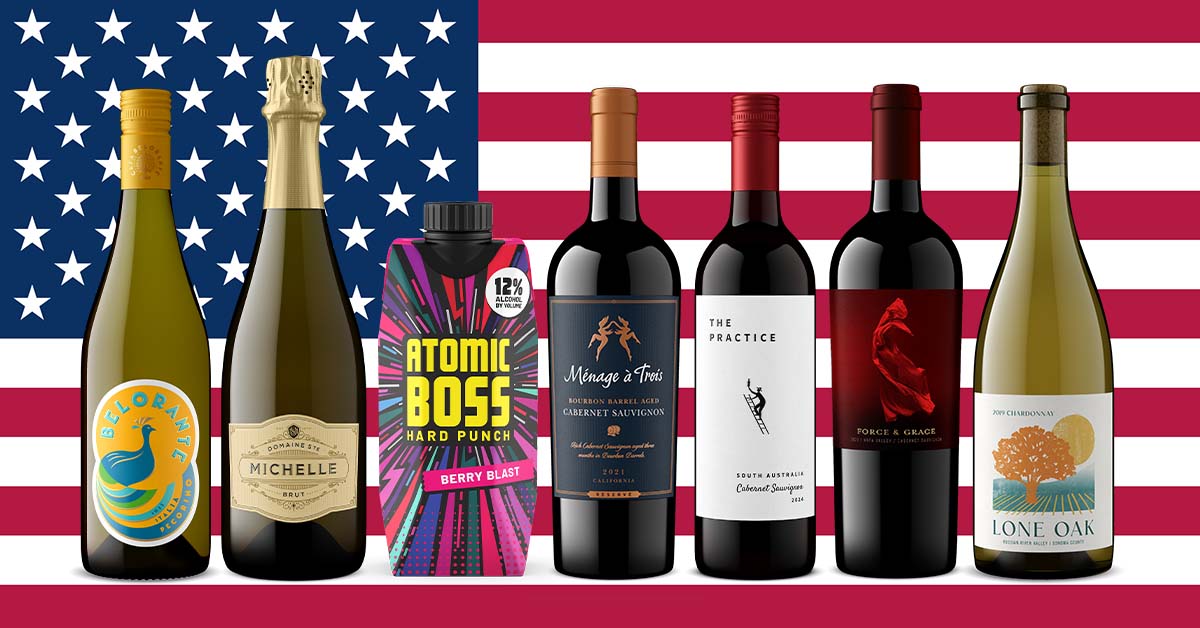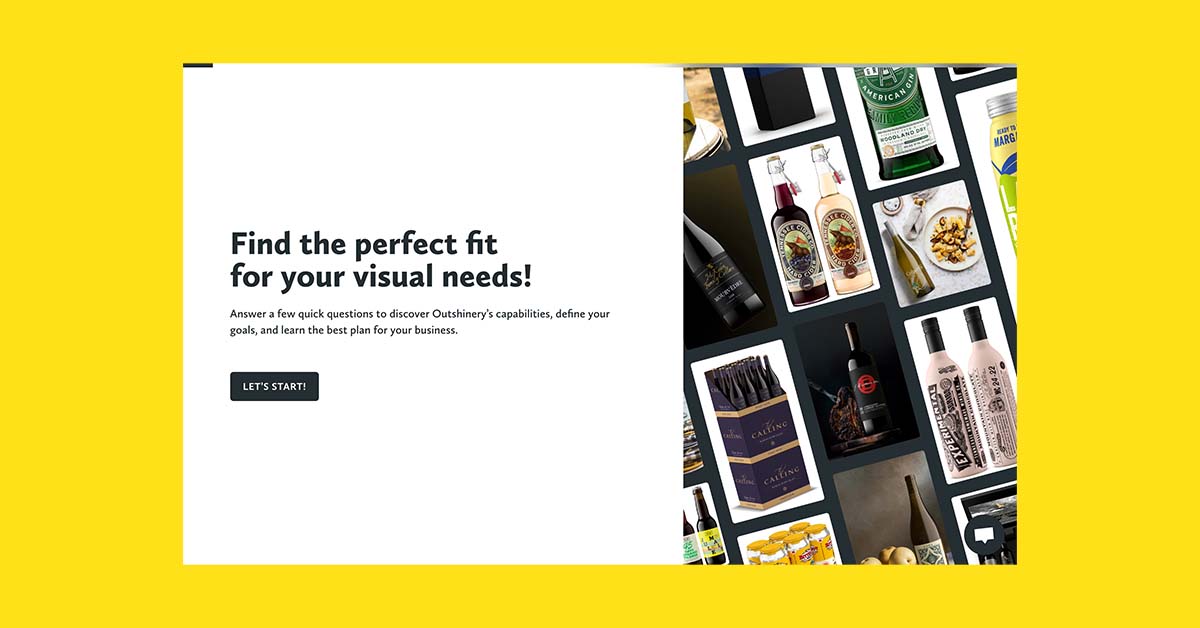Ecommerce website optimization for beverage merchandising in 2023
The wine and liquor industry is witnessing a rapid shift towards e-commerce, making it crucial for businesses to optimize their online presence.

With the right strategies, selling wine and alcohol online can be a lucrative venture. Here we’ll explore the essential tactics for boosting sales and enhancing customer satisfaction in wine allocations and ecommerce, with a focus on ecommerce website optimization for merchandising. Let’s dive in.
Key takeaways
- Optimize ecommerce website for beverage merchandising success in 2023 with product presentation, personalized recommendations, and cross-selling/upselling techniques.
- Enhance user experience by leveraging customer reviews and social proof to build trust.
- Streamline checkout & analyze performance metrics for continuous improvement.
Key strategies for ecommerce merchandising optimization
The adoption of online wine sales has been slower compared to other industries in the U.S. COVID accelerated this by 5-10 years. Interestingly, internet sales became a significant part of DTC sales during the pandemic, but sales have since returned to pre-COVID levels.
With that in mind, it’s more important than ever to optimize e-commerce merchandising for your wine online store. As more consumers buy wine online, a well-crafted wine ecommerce website that employs effective strategies such as enhancing product presentation, providing personalized recommendations, and utilizing cross-selling and upselling techniques can significantly boost sales. To legally sell wine online, businesses must adhere to industry regulations and ensure a seamless customer experience, including managing shipping costs and order fulfillment online. Selling wine through online channels has become a crucial aspect of the wine industry’s growth, making it essential to offer wine online to stay competitive.

The foundation for implementing these key strategies to sell wine online also lies in selecting an appropriate ecommerce selling wine online platform for your wine business. Factors to consider when selecting an ecommerce website platform for wine businesses include:
- Website building
- Analytics
- Payment processing
- Search engine optimization
Product presentation and visual appeal for online wine sales
Attracting customers and showcasing your own wine brands and products is best done through high-quality visuals. Wine distributors and e-commerce websites should use visually appealing product displays and high-quality images to create a captivating online shopping experience. Some tips for creating visually compelling product displays include:
- Utilizing 3D-rendered product images offers a visually captivating alternative to conventional photography.
- Avoiding subpar bottle shots is of utmost importance, as it can harm your brand's reputation. Moreover, it is crucial to have high-quality product images as their absence can significantly impact conversion rates.
Specialized wine software solutions, such as those offered by Commerce7 and WineDirect, can help create a unique wine online storefront and provide a seamless shopping experience for both wine merchants and enthusiasts while remaining compliant. Some benefits of using these services include:
- Creating a visually appealing website that reflects your brand
- Optimizing wine sales through e-commerce merchandising
- Providing a seamless shopping experience for customers
By using these specialized wine club templates, you can enhance your online and wine club business and attract more customers.

Personalized recommendations in your online store
Offering personalized recommendations based on customer preferences and browsing history can significantly enhance the user experience and result in increased sales and repeat customers. A shopping experience tailored to individual customers has the potential to turn 44% of them into repeat buyers.
Personalized email campaigns can also be an effective way to increase customer engagement and boost sales of wine. Effective use of customer data allows for the creation of targeted marketing campaigns that resonate with your audience, leading to higher conversion rates.
Cross-selling and upselling techniques
Cross-selling and upselling techniques are powerful strategies that can increase average order value and improve customer satisfaction. Some examples of these techniques include:
- Recommendations of related products
- Considering the original intent of the customer
- Enhancing a seamless shopping experience that encourages cart additions
By implementing these strategies, you can effectively cross-sell and upsell to your customers, leading to increased sales and customer satisfaction.
Displaying related products at the bottom of the search results page is an ideal location to implement cross-selling techniques, as it doesn’t disrupt the customer’s browsing experience. Careful curation of product recommendations not only boosts sales but also enhances customer loyalty and satisfaction.
Optimizing site navigation and search functionality
User-friendly site navigation and advanced search features are crucial components of a successful, ecommerce platform or a website builder. Ease in finding products increases the likelihood of customers completing their purchases. Moreover, a well-designed navigation system can enhance the overall shopping experience and encourage customers to explore more of your product offerings.
Incorporating essential information in the header, implementing an e-commerce navigation search bar, and adding a site-wide benefits bar to highlight key features are just a few best practices for optimizing site navigation in e-commerce. Furthermore, advanced search features such as autocomplete, search filters, and search suggestions can assist customers in refining their search results and finding the desired products more efficiently.
User-friendly navigation
Customer experience in -commerce is of utmost importance, as it facilitates a smooth browsing experience and aids customers in purchasing. By providing intuitive menus, clear labels, and convenient search functions, customers can quickly and easily find the desired products, thus optimizing the purchasing process and potentially increasing sales.
Don't forget to review the mobile experience! Mobile devices are becoming increasingly popular for online shopping, so it's essential to make sure your site navigation works seamlessly on mobile devices. This may include optimizing the layout of menus and search bars, reducing image sizes, and making sure all text is legible and easily clickable. (More on this later!)
When designing a user-friendly navigation system, it’s crucial to use straightforward language, provide visual indicators, and test the system. Continual refinement of your website’s navigation ensures a seamless browsing experience, encouraging customer retention and recurring revenue.

Advanced search features
Advanced search features, such as filters, autocomplete suggestions, and keyword search, are invaluable tools for helping customers locate the products they seek effortlessly. Advanced search features enhance product discovery and customer satisfaction by enabling efficient refinement of search results and easy location of desired products.
To maximize the effectiveness of advanced search features, it’s crucial to ensure the features are user-friendly and comprehensible, label filters clearly, and incorporate pertinent keywords in autocomplete suggestions. Continuous optimization of your website’s search functionality provides a smooth and enjoyable shopping experience for your customers.

Leveraging customer reviews and social proof to sell wine online
Customer reviews and social proof are powerful tools that can foster trust and credibility with prospective customers, thus motivating them to complete a purchase. Showcasing customer reviews and social proof on your website demonstrates the dependability and reliability of your offerings, and reassures prospective customers of positive experiences with your products and services.
Wineries can utilize dedicated platforms (think Troly, WineDirect, Commerce7, vinSUITE, etc.) to effectively manage their wine club, as it grants detailed access to customers’ profiles and purchase records. Through the use of customer data, you can create targeted marketing campaigns that resonate with your audience and ultimately lead to higher conversion rates.
Encouraging customer reviews
Customer reviews offer useful feedback regarding customer satisfaction and enable businesses to recognize areas for growth. Motivating customers to leave reviews garners valuable insights into your products and services, identifying potential areas for improvement.
One way to encourage customers to leave reviews is by providing discounts, rewards, or other incentives. Responding to customer reviews is equally important, as it demonstrates that you value their opinion and are committed to improving the customer experience. Prompt responses, a professional demeanor, and expressions of appreciation for customer input foster customer loyalty and encourage repeat business.

Boost credibility with testimonials
Social proof is a psychological phenomenon in which individuals observe the actions of others to determine their own behavior. By featuring:
- customer reviews
- user-generated content
- influencer endorsements
- expert endorsements
on your website, you can establish trust and credibility with potential customers, ultimately influencing their purchasing decisions.
To maximize the effectiveness of social proof, it’s crucial to:
- prominently display customer reviews
- feature user-generated content in strategic locations
- highlight influencer endorsements
- showcase expert endorsements in a manner that is pertinent to the product
Leveraging social proof enhances brand reputation and drives sales.
Mobile optimization and responsive design
With the growing number of consumers using mobile devices to shop at online retailers, it’s essential to optimize your ecommerce platform ecommerce website for mobile and employ responsive design. A mobile-optimized website ensures that customers can easily:
- Browse and purchase products on their smartphones and tablets
- Access all features and functionalities of your website
- Have a seamless shopping experience across devices
By implementing responsive design and optimizing for mobile, you can meet the needs of tech-savvy customers and boost online sales, regardless of the device they use.

Mobile-friendly layouts
A mobile-friendly layout is essential for ensuring that customers can comfortably browse and purchase items on their mobile devices and tablets. By employing responsive design, your website automatically adapts to the size of the device in use, furnishing an ideal viewing experience for the user.
Utilizing specialized wine templates, such as those offered by dedicated design providers such as Vin Agency or Highway 29, can help create a mobile-friendly layout that distinguishes your online storefront from competitors and provides the best solution for a seamless shopping experience for wine enthusiasts.
Streamlined checkout process
A streamlined checkout process is crucial for reducing friction and increasing the likelihood of customers completing their purchases. Minimizing the number of steps and fields necessary to complete a purchase enhances customer satisfaction and increases conversion rates.
Some recommended practices for implementing an efficient checkout process include:
- Providing clear and concise instructions
- Reducing the number of steps and fields required
- Offering a range of payment options to cater to customer preferences
Continuous refinement of the checkout process ensures a smooth and enjoyable shopping experience for customers.

Analyzing performance metrics and continuous improvement
Collecting and analyzing customer data is essential in e-commerce merchandising, as it allows businesses to:
- Identify areas for improvement
- Track the success of their optimization efforts
- Monitor key performance indicators (KPIs)
- Consider sales data, website analytics, and inventory management
- Gain valuable insights into business performance
- Make informed decisions to drive growth
In addition to analyzing performance metrics, continuous improvement is crucial for maintaining a successful e-commerce website. Employing A/B testing and iterative improvements allows businesses to fine-tune their website and optimize the user experience.
Regular review and updating of e-commerce strategies keep wine manufacturers and businesses ahead of the competition and ensure long-term success in the wine and alcohol industry itself.
Key Performance Indicators (KPIs)
Monitoring key performance indicators (KPIs) is crucial for identifying areas for improvement and tracking the success of your optimization efforts. In the wine industry, KPIs can include metrics such as direct-to-consumer (DTC) dollar sales, average order value, and customer retention rates.
For instance, the 2022 Direct-to-Consumer Wine Survey Report by Silicon Valley Bank revealed that DTC dollar sales increased by 16.7% in 2021, with consumers tending to invest more per bottle and avoiding bottles priced under $11.
Ecommerce platforms like Commerce7 and WineDirect are examples of ecommerce platforms that offer comprehensive analytics tools that enable tracking of traffic sources, visitor engagement, and revenue measurement. Closely monitoring KPIs enables businesses to make data-driven decisions, optimizing their website and driving sales.
A/B testing and iterative improvements
A/B testing is a valuable tool for comparing two versions of a website or app to determine which one achieves the desired outcome more effectively. By creating two versions of a page or feature and testing them with a sample of users, businesses can evaluate which version performs better and make improvements accordingly.
Implementing A/B testing and iterative improvements can help businesses fine-tune their website, optimize the user experience, and ultimately increase conversions. Continuous testing and refinement of best ecommerce platforms and-commerce strategies ensure a seamless and enjoyable shopping experience for customers.
Checklist for wine and alcohol ecommerce merchandising: best practices and mistakes to avoid
To ensure success in the wine and alcohol e-commerce industry, businesses and those selling wine online distributors should follow a checklist of best practices and avoid common pitfalls. Partnering with a compliance and ecommerce company can be beneficial in this regard. Some dos include:
- Optimizing the website for mobile devices
- Streamlining the checkout process
- Leveraging customer reviews and social proof
- Providing a user-friendly navigation system
On the other hand, don’ts may include neglecting mobile optimization, failing to monitor performance metrics, and overlooking the importance of continuous improvement. By adhering to these best practices and avoiding common mistakes, wine sellers can create a successful, online store presence that caters to the growing demand for online wine sales.
This will not only help businesses stay competitive in the wine industry by selling wine, but the best solution will also ensure a seamless and enjoyable wine shopping experience for their customers.
Frequently Asked Questions
What is ecommerce merchandising strategy?
eCommerce merchandising is a strategy to increase online sales by organizing, structuring, and standardizing products with elements such as branding, product placement, engaging images, and innovative ways to display items. Its purpose is to make it easier for customers to find what they are looking for and ultimately get them to 'add to cart'.
How do I merchandise an ecommerce website?
To merchandise an ecommerce website successfully, incorporate elements like a mission statement and images of popular products/services, offer promotional offers, provide plenty of CTAs, use storytelling on the homepage, practice visual merchandising, create collections for promotion, encourage impulse purchases, optimize your site search and highlight important features with social proof and product reviews.
What is merchandising optimization?
Merchandising optimization involves using data-driven and customer-centric strategies to create engaging and relevant product displays, recommendations, and promotions. It is an important step in driving conversions and promoting customer and loyalty programs, as it optimizes the online store and catalog to provide customers with the right products.
How can I improve the visual appeal of my wine ecommerce website?
Improve the visual appeal of your wine e-commerce website by using professional high-quality images, and specialized winery layout templates.
What are the benefits of mobile optimization and responsive design for ecommerce websites?
Mobile optimization and responsive design for ecommerce websites provide customers with a seamless shopping experience across different devices, making it easier to browse and purchase products on their smartphones and tablets.
Summary for online merchandising for the wine industry
In conclusion, optimizing your wine e-commerce website is crucial for staying competitive in the rapidly growing online, wine ecommerce industry. By implementing effective strategies such as enhancing product presentation, providing personalized recommendations, optimizing site navigation and search functionality, leveraging customer reviews and social proof, and continuously improving your website, you can boost sales and provide an exceptional shopping experience for your customers. The world of wine e-commerce is ripe with opportunity, and with the right strategies in place, your wine ecommerce business can flourish and thrive.










































